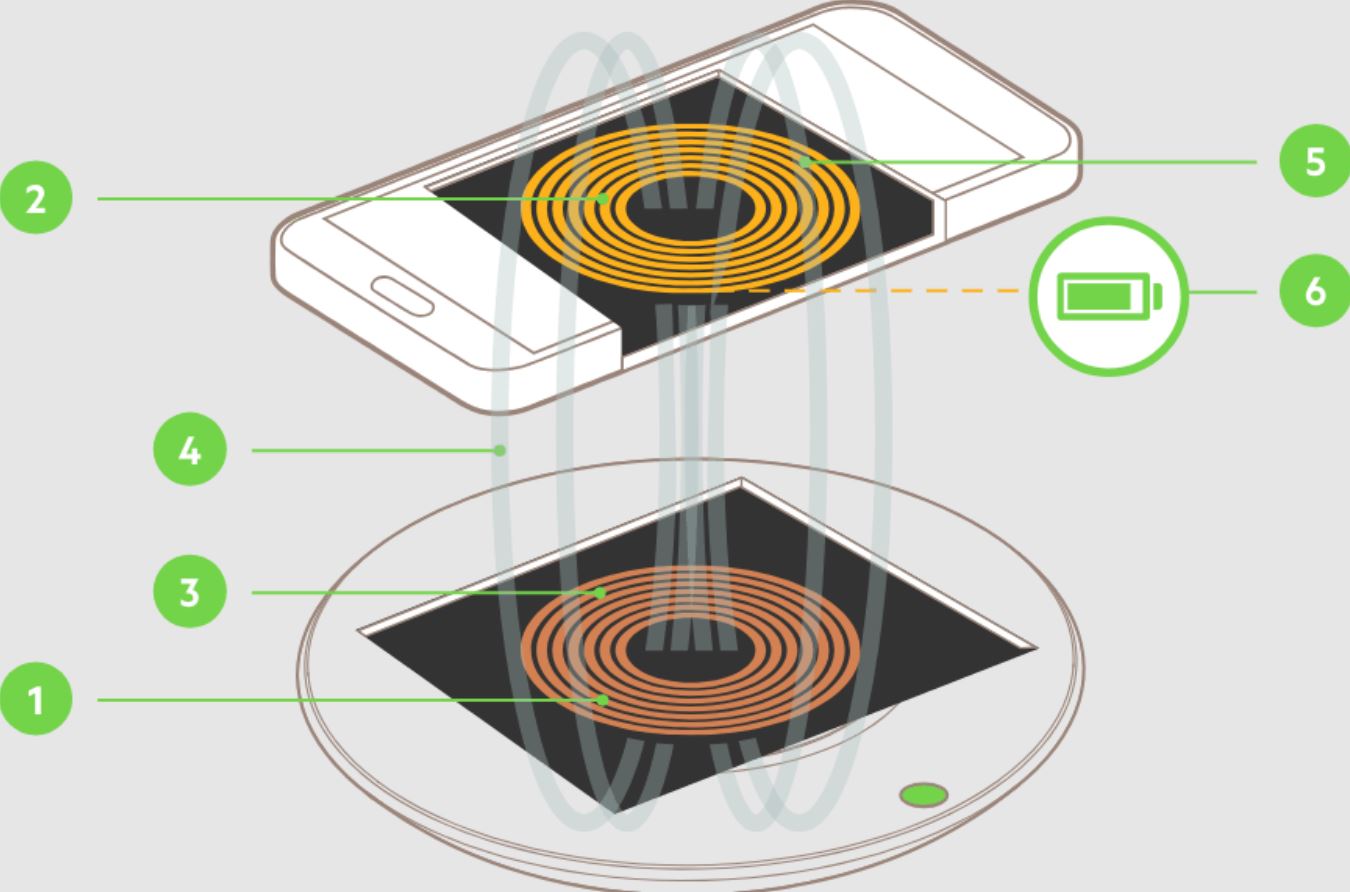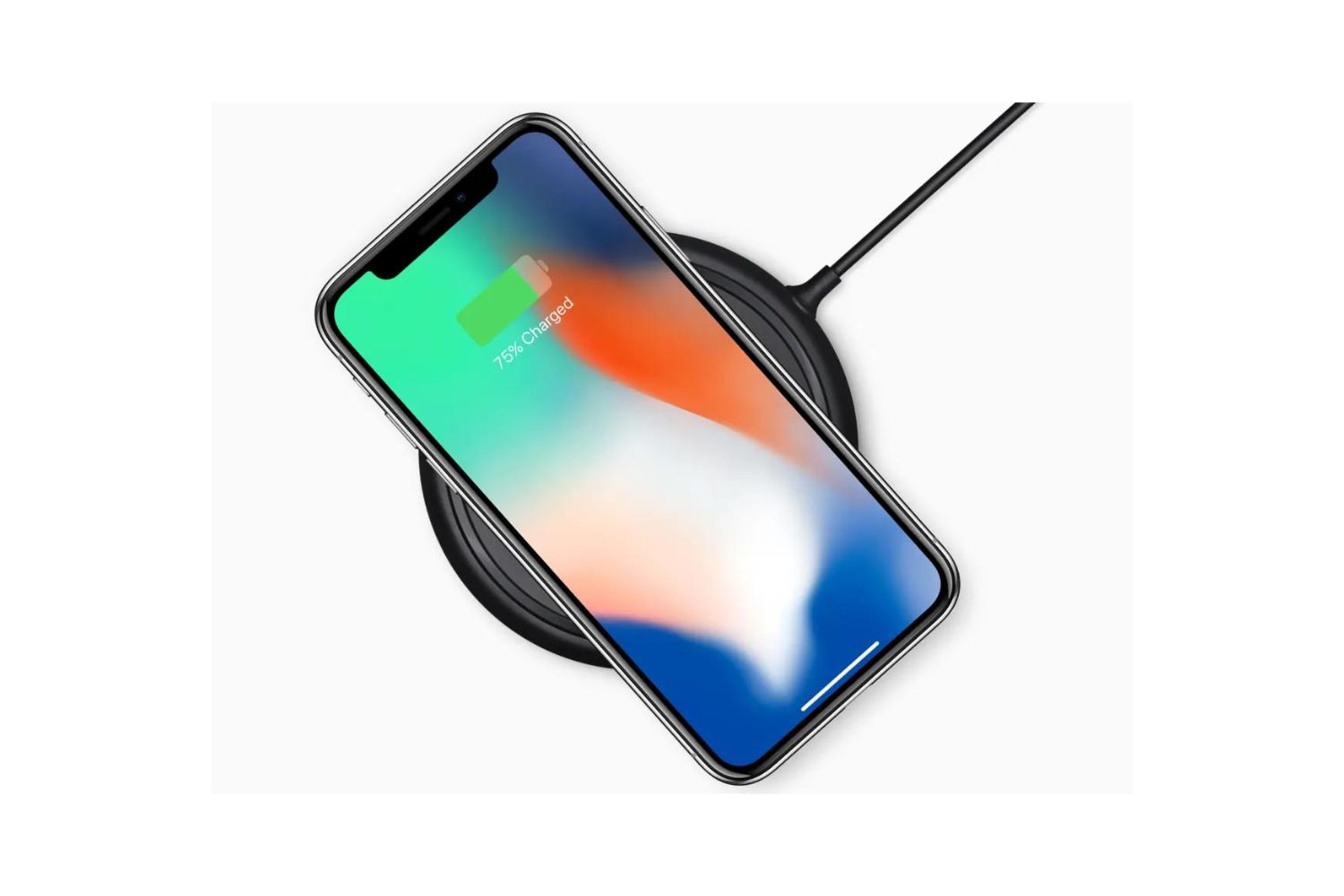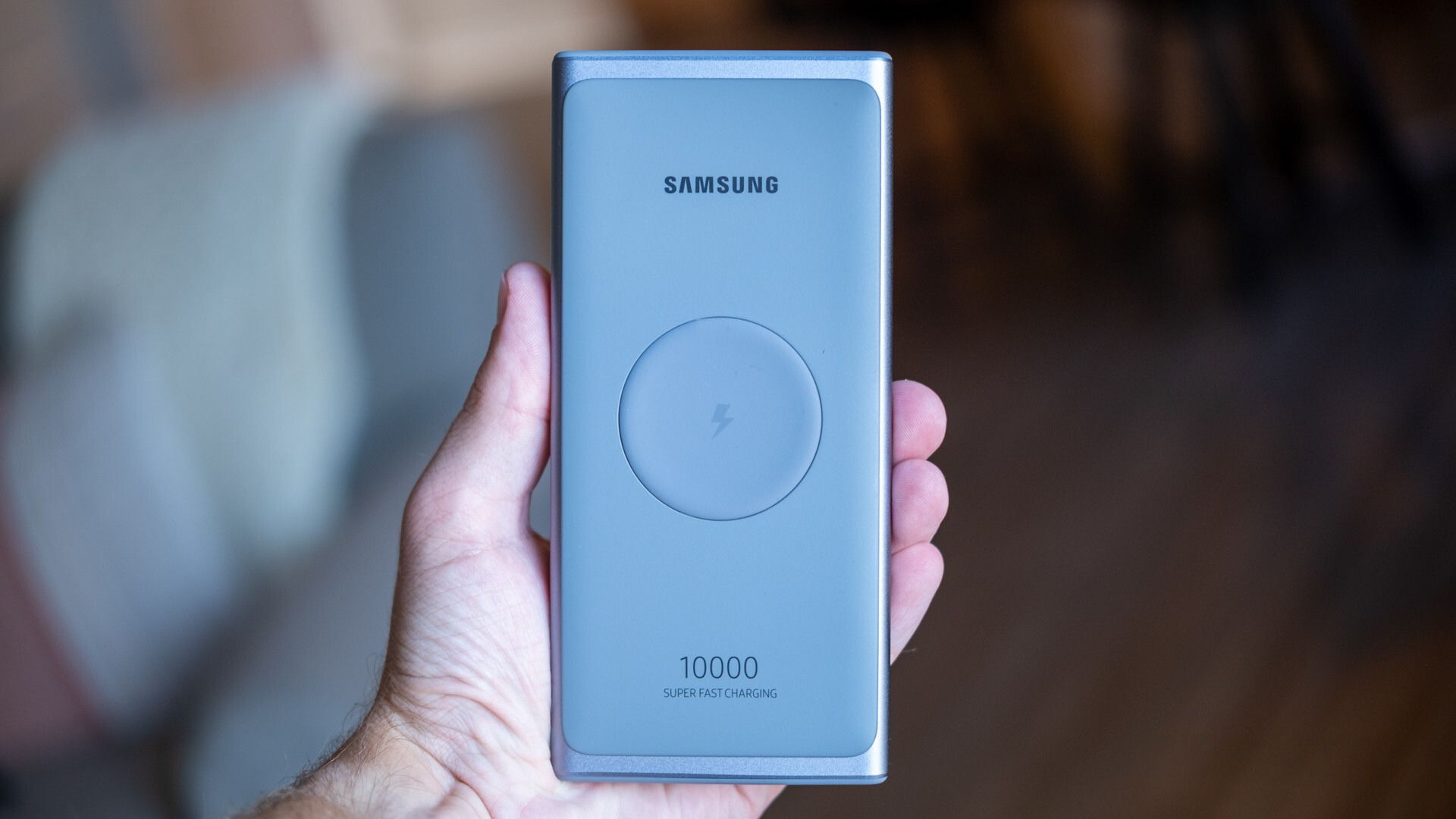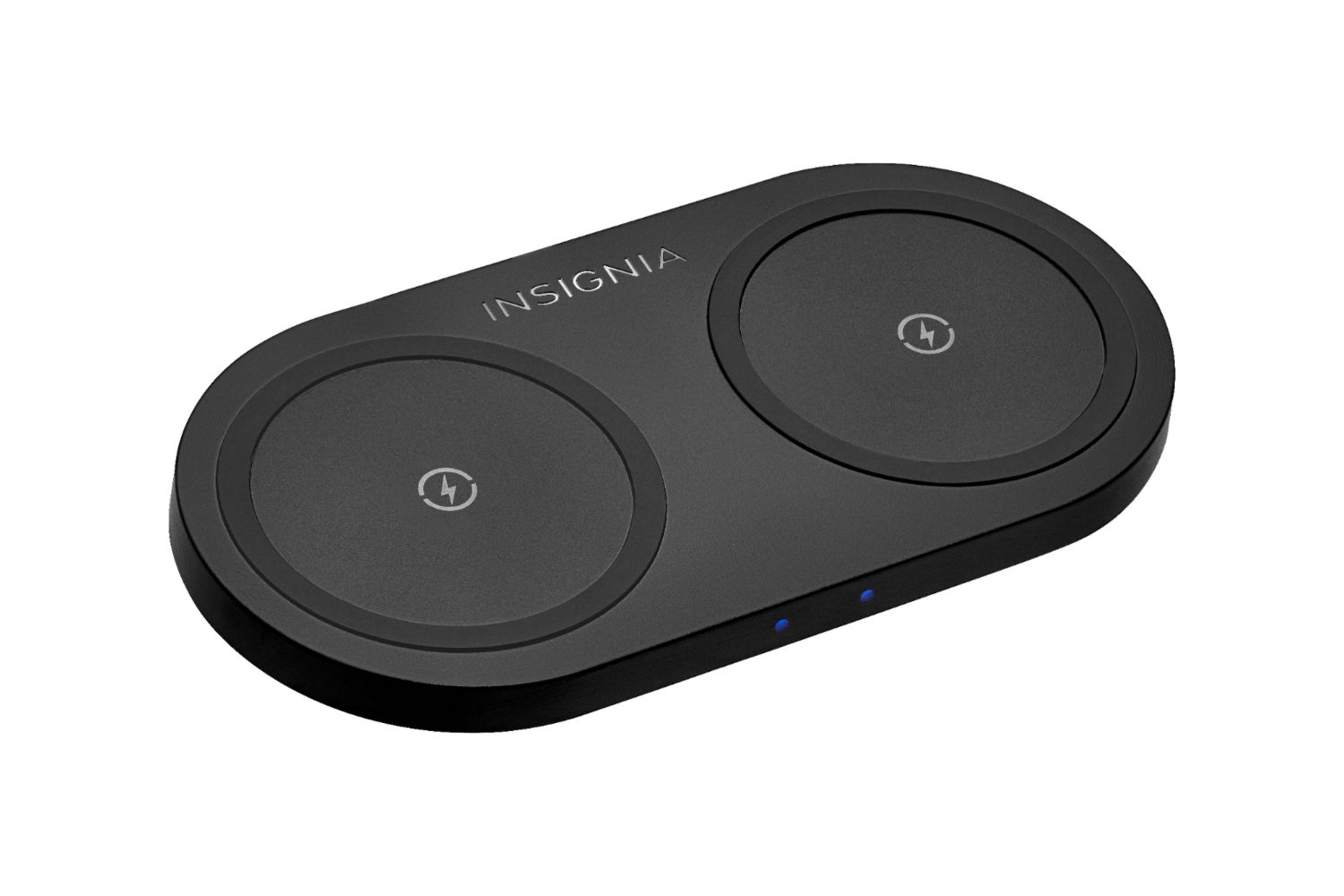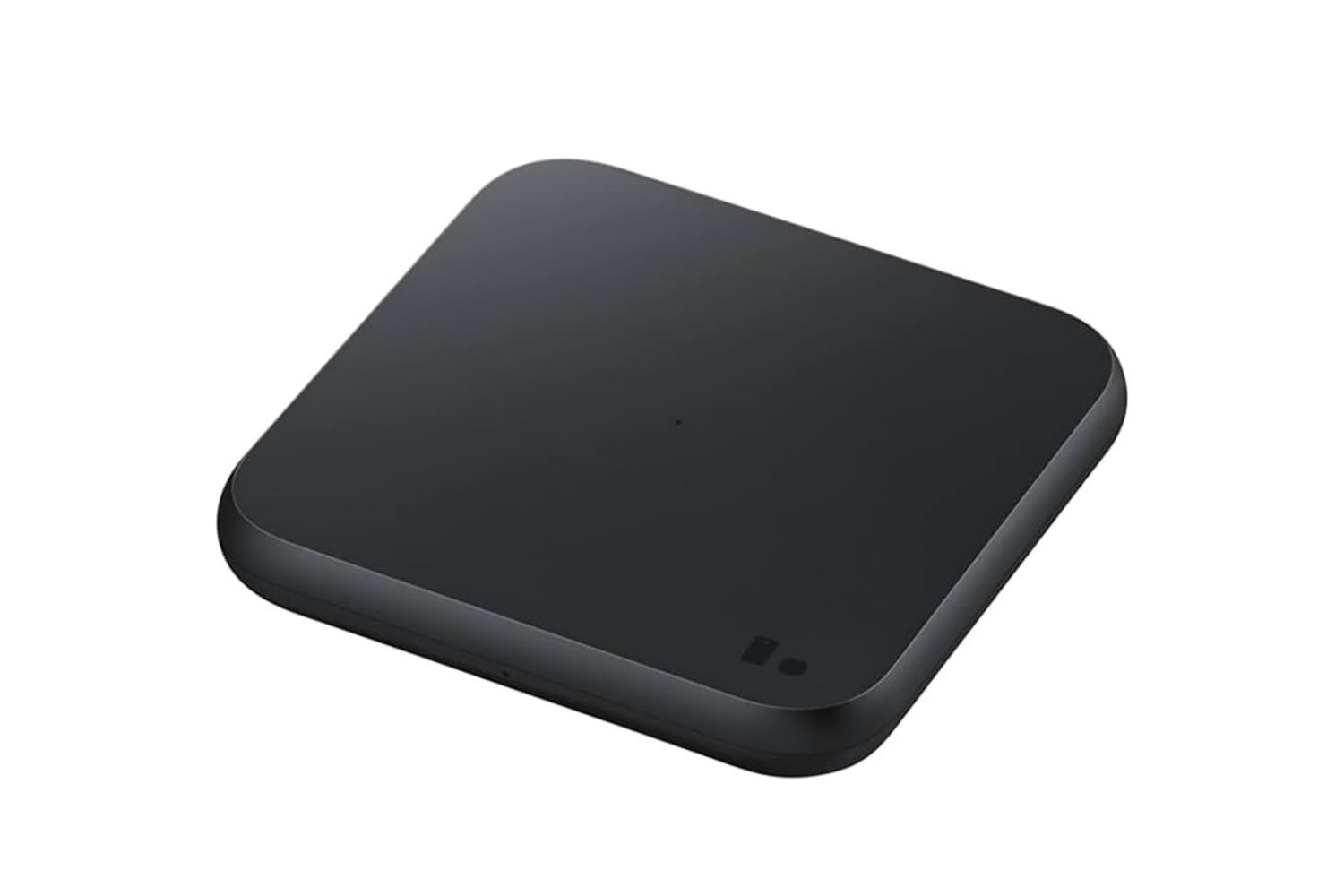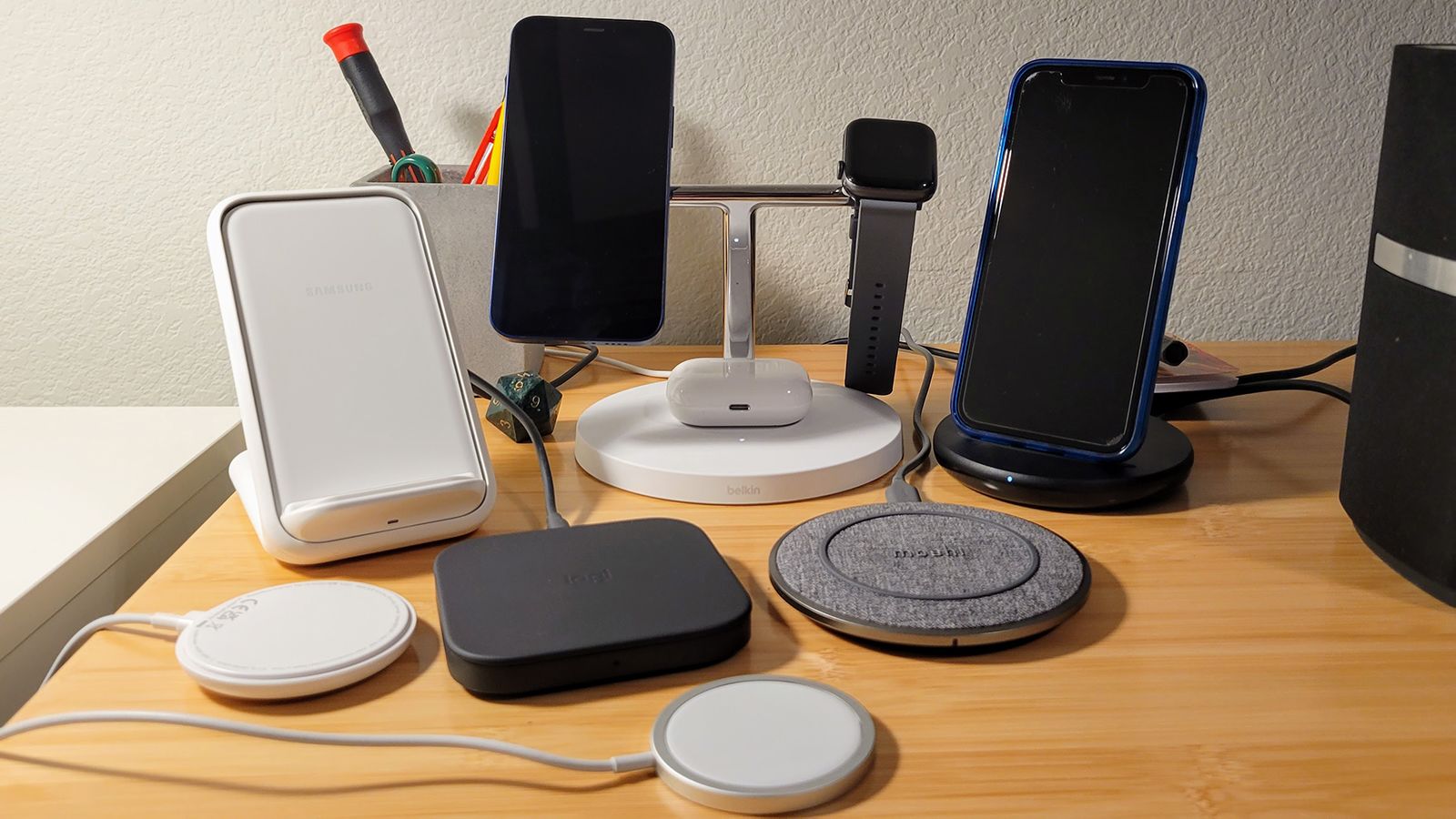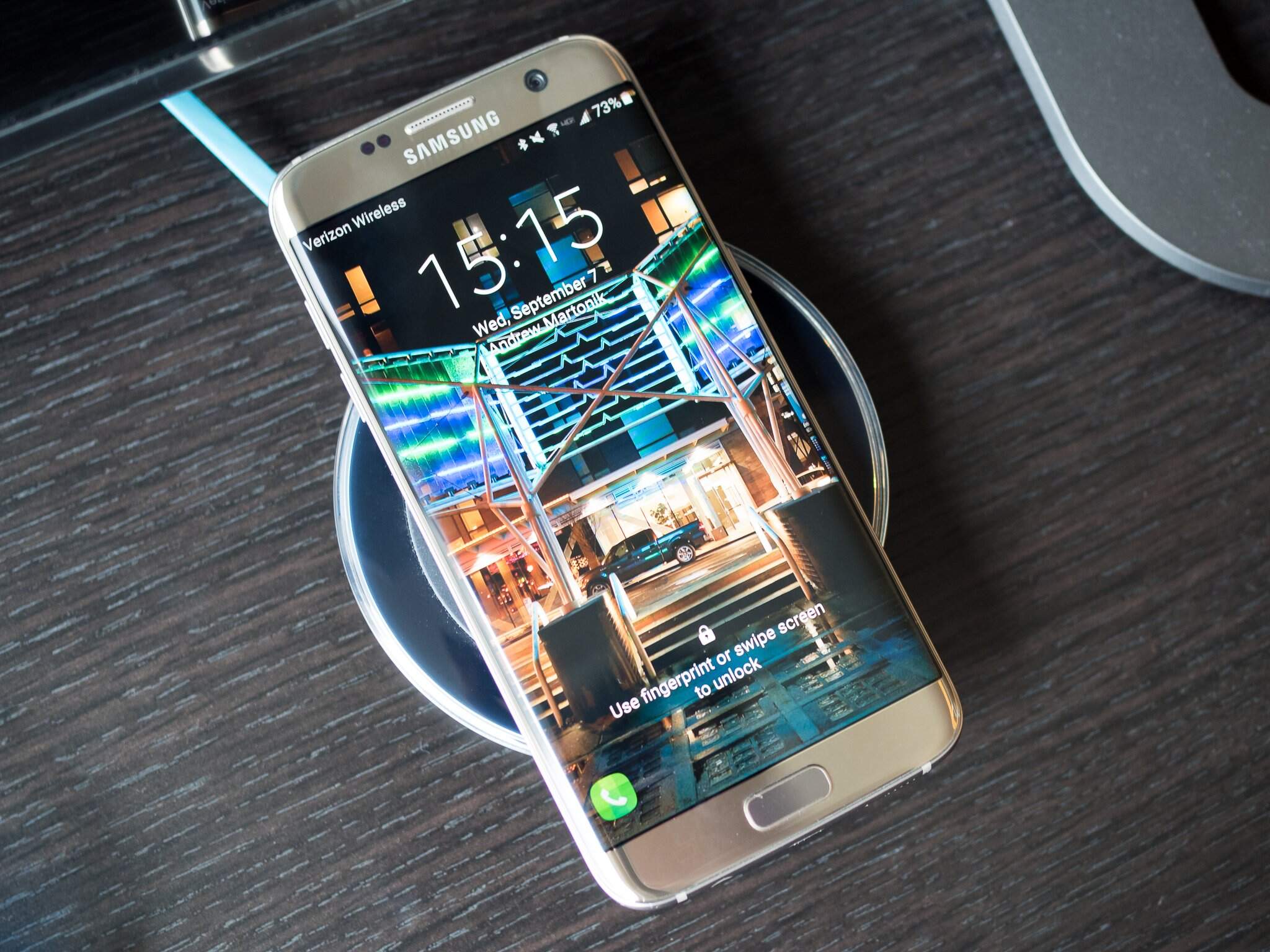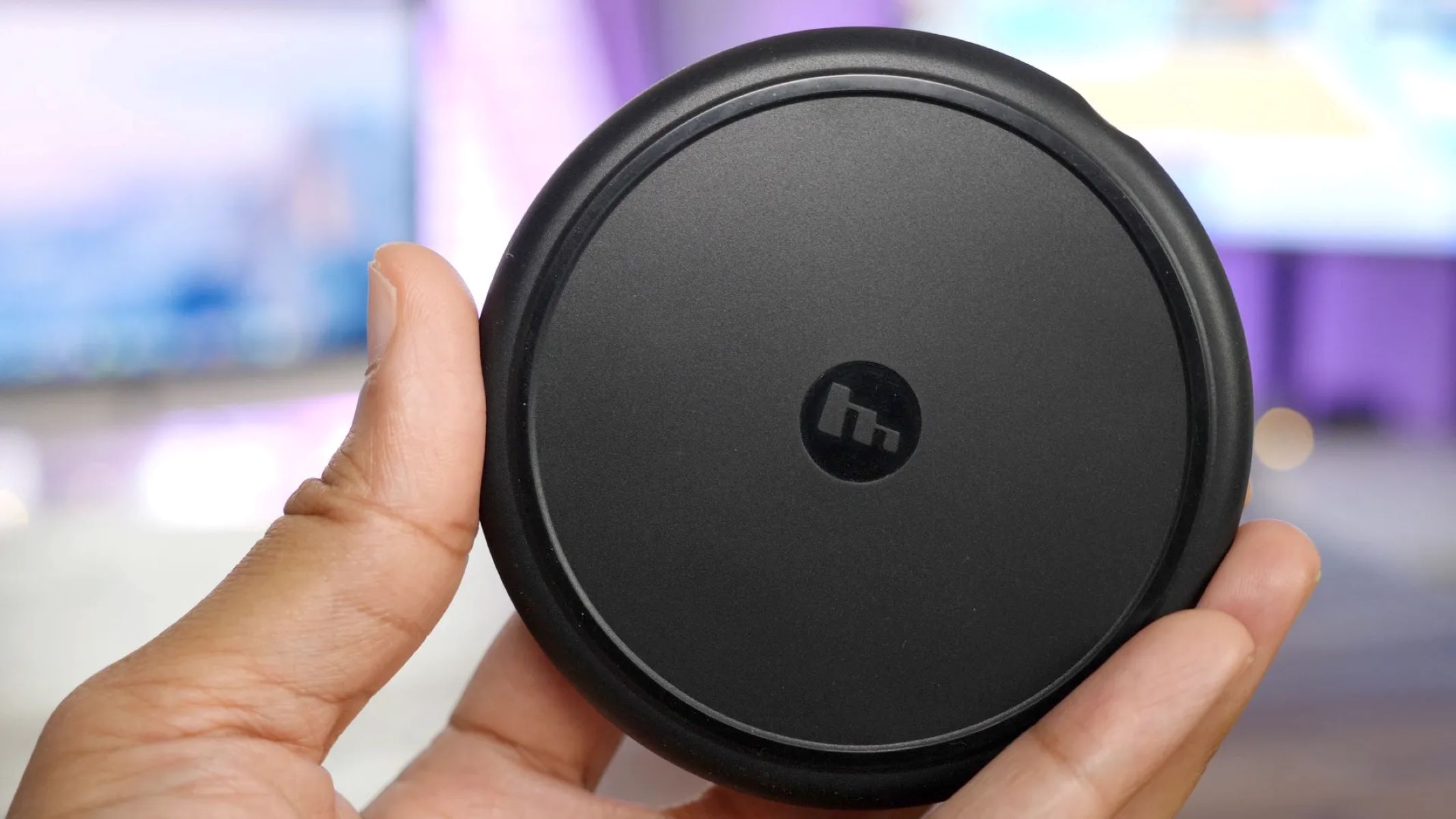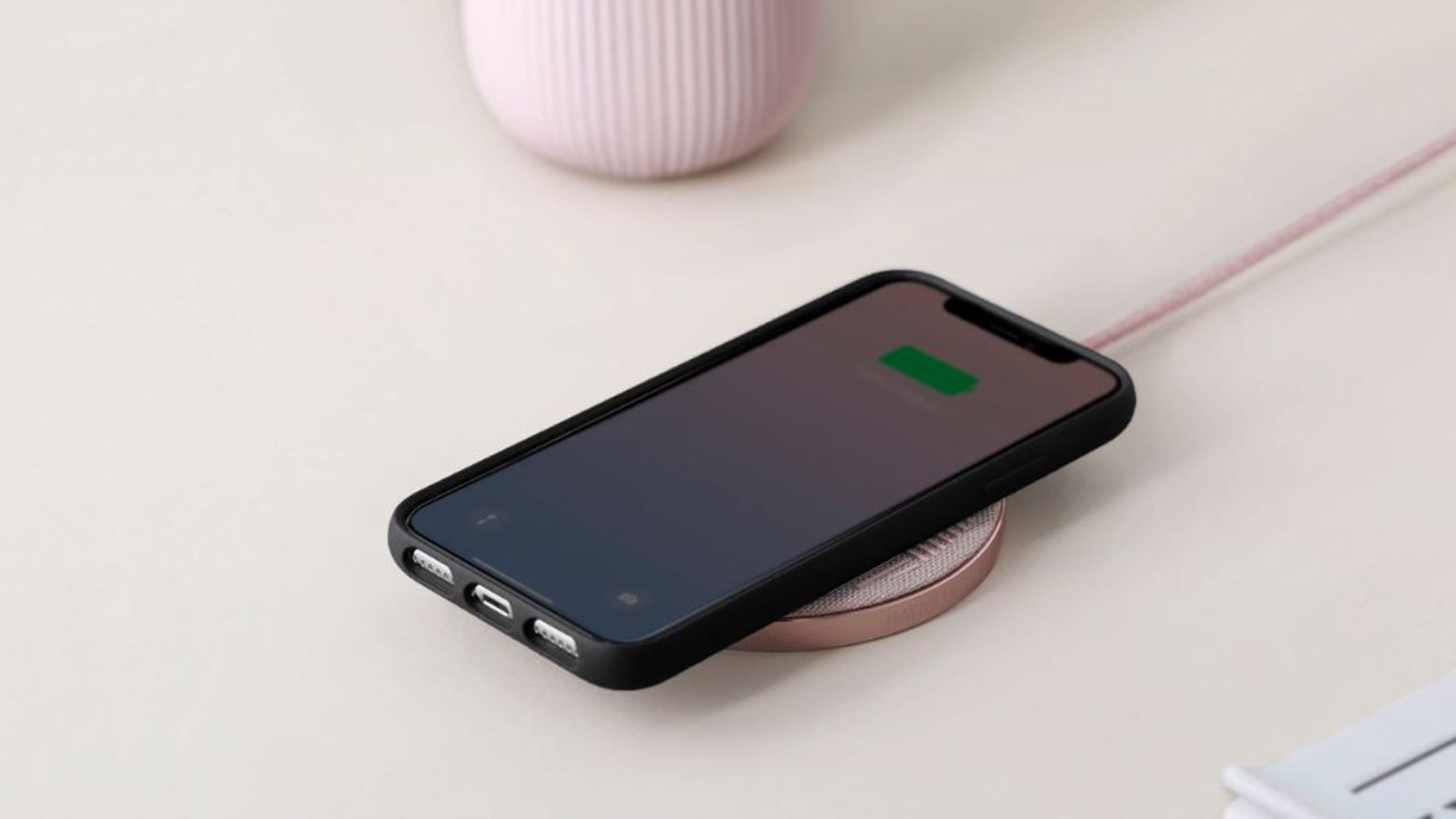Introduction
As technology continues to advance, so do our charging methods. Gone are the days of tangled cords and limited charging outlets. The advent of wireless charging has revolutionized the way we power up our devices. One of the key players in this area of innovation is the wireless charging pad.
But what exactly is a wireless charging pad and how does it work? In this article, we will delve into the fascinating world of wireless charging pads and explore the science behind this convenient and efficient charging solution.
A wireless charging pad, sometimes referred to as a wireless charger or charging base, is a portable device that enables the charging of compatible devices without the need for physical connection using cables. It utilizes the principles of electromagnetic induction to transfer energy from the pad to the device, eliminating the need for traditional wired chargers.
Although wireless charging technology has been around for several years, it has gained significant popularity in recent times due to the rise in mobile devices, such as smartphones and wearable tech, that support wireless charging capabilities.
Wireless charging works by utilizing the concept of electromagnetic fields. It employs a transmitter coil within the charging pad and a receiver coil within the device being charged. When the two coils come into close proximity, an electromagnetic field is created, allowing for the transfer of energy between the pad and the device.
In the following sections, we will explore the intricacies of wireless charging, its components, and the advantages it offers over traditional wired charging methods. So, let’s dive in and unravel the mysteries of how a wireless charging pad works.
What is a Wireless Charging Pad?
A wireless charging pad, also known as a wireless charger or charging base, is a device that allows for the charging of compatible devices without the need for physical connection using cables. It serves as a convenient and efficient way to power up devices such as smartphones, smartwatches, and other devices that support wireless charging capabilities.
Wireless charging pads utilize an innovative technology called inductive charging to transfer energy from the pad to the device being charged. This technology has gained popularity in recent years due to its convenience and simplicity.
Unlike traditional wired chargers, which require the insertion of a charging cable into the device’s charging port, wireless charging pads rely on a wireless connection between the pad and the device. This not only eliminates the need for cables but also reduces wear and tear on the charging port, which is a common point of failure in many devices.
Wireless charging pads come in various shapes and sizes, ranging from compact discs to larger charging pads that can accommodate multiple devices simultaneously. They can be found in homes, offices, and public spaces, providing a convenient charging solution for users on the go.
To use a wireless charging pad, compatible devices need to have built-in wireless charging capabilities or be equipped with wireless charging receiver accessories. These accessories usually come in the form of a thin pad or case that can be attached to the device, enabling it to receive energy from the charging pad.
As wireless charging technology continues to evolve, we can expect to see more advanced features and increased efficiency in charging pads. With the growing number of devices supporting wireless charging, this technology is quickly becoming a standard feature in many modern devices.
Now that we have an understanding of what a wireless charging pad is, let’s dive deeper into the science behind how wireless charging works.
How Does Wireless Charging Work?
Wireless charging technology operates on the principles of electromagnetic induction to transfer energy from the charging pad to the device being charged. This process involves the interaction of two main components: the transmitter coil in the charging pad and the receiver coil in the device.
When a compatible device is placed on the wireless charging pad, an alternating current is passed through the transmitter coil. This alternating current generates an oscillating magnetic field around the coil.
On the device’s side, the receiver coil is responsible for picking up this magnetic field and converting it back into electrical energy. This energy is then used to charge the device’s battery. The receiver coil is often integrated into the device or attached as an accessory.
The transfer of energy between the transmitter coil and the receiver coil occurs through electromagnetic induction. As the oscillating magnetic field generated by the transmitter coil interacts with the receiver coil, a current is induced in the receiver coil, allowing for the transfer of energy.
It is important to note that the charging pad and the device need to be in close proximity and properly aligned for efficient charging. This is usually achieved by aligning the receiver coil in the device with the transmitter coil in the charging pad.
Wireless charging technology has evolved to support different power levels and charging speeds, depending on the capabilities of the charger and the device being charged. Manufacturers often specify the maximum power output of their wireless charging pads to ensure compatibility with varying device requirements.
In recent years, advancements in wireless charging technology have allowed for the development of more efficient systems, reducing energy loss during the charging process. Additionally, technologies such as Qi wireless charging standards have been established to ensure compatibility and interoperability among different wireless charging devices.
Overall, wireless charging offers a convenient and clutter-free way to power up devices. As the technology continues to improve, we can expect to see faster charging speeds and wider compatibility with a range of devices.
Inductive Charging
Inductive charging is the underlying concept that enables wireless charging technology to function. It relies on the principles of electromagnetic induction to transfer power between a charging pad and a compatible device.
At the heart of inductive charging is the phenomenon of electromagnetic fields. When an electric current flows through a wire, it generates a magnetic field around it. Similarly, when a magnetic field fluctuates near a wire, it induces an electric current in the wire. This reciprocal relationship is the foundation of electromagnetic induction.
Inductive charging involves two coils: a transmitter coil in the charging pad and a receiver coil in the device being charged. When the charging pad is connected to a power source, an alternating current (AC) is passed through the transmitter coil, creating an oscillating magnetic field.
When the device is placed on the charging pad, the receiver coil picks up the magnetic field generated by the transmitter coil. This fluctuating magnetic field induces an electric current in the receiver coil, which is then converted into direct current (DC) to charge the device’s battery.
The efficiency of inductive charging depends on several factors, including the proximity and alignment of the coils, the power output of the charging pad, and the design of the receiver coil in the device. Proper alignment is crucial to ensure effective energy transfer and minimize energy loss.
Inductive charging has seen significant advancements over the years. One notable development is the establishment of the Qi wireless charging standard, which has been widely adopted by major manufacturers in the industry. This standard ensures compatibility and interoperability among different wireless charging devices.
One limitation of inductive charging is the relatively short range over which energy transfer can occur. The coils need to be in close proximity and properly aligned for efficient charging. This limitation can be addressed through the use of resonant inductive coupling, a technique that allows for energy transfer over slightly longer distances.
Overall, inductive charging is a key component of wireless charging technology. Its ability to wirelessly transfer power between a charging pad and a device without the need for physical connection has revolutionized how we recharge our devices in a convenient and clutter-free manner.
Electromagnetic Field
In the context of wireless charging, the electromagnetic field plays a crucial role in enabling the transfer of energy between the charging pad and the device being charged. Understanding the concept of electromagnetic fields helps demystify how wireless charging works.
An electromagnetic field is a physical field produced by the movement of electric charges. It consists of both an electric field and a magnetic field, which are interconnected and propagate through space as waves. These waves can carry energy and interact with objects within their range.
In the case of wireless charging, the charging pad’s transmitter coil generates an alternating current (AC), which creates an oscillating magnetic field around it. This magnetic field is essential for inducing a current in the receiver coil of the device being charged.
When the device is placed on the charging pad, the receiver coil within it detects the magnetic field and undergoes electromagnetic induction. This means that as the magnetic field fluctuates, it induces an electric current in the receiver coil.
The fluctuating electric current in the receiver coil is then converted into direct current (DC) to charge the device’s battery. This conversion is typically done through a rectifier circuit, which rectifies the alternating current into a steady flow of direct current suitable for charging purposes.
It is important to note that electromagnetic fields follow the principle of the inverse square law, which means that their strength diminishes as the distance from the source increases. This limitation affects the effective range over which wireless charging can occur. For efficient charging, the device needs to be placed within the effective range of the charging pad’s electromagnetic field.
The strength and range of electromagnetic fields in wireless charging systems are influenced by various factors, including the power output of the charging pad, the size and design of the coils, and the presence of any barriers or interference that may affect the field propagation.
By harnessing the power of electromagnetic fields, wireless charging technology offers a convenient and efficient method for powering up devices. As research and development in this field continue, we can anticipate further improvements in the efficiency and range of wireless charging systems.
Components of a Wireless Charging Pad
A wireless charging pad consists of several key components that work together to enable the efficient transfer of energy from the pad to the device being charged. Understanding these components helps shed light on the inner workings of a wireless charging pad.
1. Transmitter Coil: The transmitter coil, also known as the primary coil, is a key component of the charging pad. It is responsible for generating an alternating current (AC) that creates an oscillating magnetic field. This magnetic field is essential for inducing a current in the receiver coil of the device.
2. Receiver Coil: The receiver coil, also known as the secondary coil, is present in the device being charged. It detects the magnetic field generated by the charging pad’s transmitter coil and undergoes electromagnetic induction. This induction results in the generation of an electric current in the receiver coil.
3. Energy Transfer: The energy transfer between the charging pad and the device occurs through electromagnetic induction. As the magnetic field generated by the transmitter coil interacts with the receiver coil, a current is induced in the receiver coil. This current is then converted into direct current (DC) to charge the device’s battery.
4. Control Circuit: A wireless charging pad typically incorporates a control circuit that manages the power delivery and communication between the charging pad and the device. This circuit ensures the efficient transfer of energy and regulates various parameters, such as power output and charging speed.
5. Power Source: The charging pad requires a power source, usually in the form of an electrical outlet, to operate. The power is supplied to the charging pad, which then converts it into the appropriate AC current for charging purposes.
6. Housing and Design: Wireless charging pads come in various shapes, sizes, and designs. They are often made from durable materials such as plastic, metal, or glass and feature a sleek and compact design. The aesthetics of the charging pad are carefully considered to blend seamlessly with different environments and enhance user experience.
By combining these components, wireless charging pads provide a convenient and cable-free solution for powering up devices. The design and integration of these components ensure efficient energy transfer and compatibility with a wide range of devices that support wireless charging technology.
Transmitter Coil
The transmitter coil is a crucial component of a wireless charging pad. It plays a pivotal role in generating the alternating current (AC) that creates the oscillating magnetic field necessary for wireless energy transfer.
The transmitter coil is typically a loop or helix-shaped coil made of conductive material, such as copper or aluminum. It is wound around a core to enhance its magnetic field strength. The number of turns in the coil and the size of the core can vary depending on the design and power requirements of the charging pad.
When electric current flows through the transmitter coil, it generates a magnetic field. This magnetic field fluctuates in strength and direction as the AC current alternates. The frequency of the AC current, often in the range of tens to hundreds of kilohertz, determines the oscillation speed of the magnetic field.
The strength of the magnetic field generated by the transmitter coil is proportional to the amount of current flowing through the coil. Thus, the power output of the charging pad determines the strength of the magnetic field and, consequently, the efficiency of energy transfer.
To ensure an effective energy transfer, the transmitter coil needs to be properly aligned with the receiver coil in the device being charged. The alignment between the coils directly affects the coupling efficiency, which is a measure of the energy transferred from the transmitter to the receiver.
Manufacturers often optimize the design of the transmitter coil to achieve the desired charging performance. They consider factors such as coil size, shape, and positioning to maximize coupling efficiency and minimize energy loss due to factors like heat dissipation.
As wireless charging technology evolves, advancements in coil design and materials continue to improve charging efficiency. These developments help increase the range over which devices can be charged wirelessly and enhance the overall user experience.
The transmitter coil, along with the other components of a wireless charging pad, enables convenient and efficient wireless charging. Its ability to generate an oscillating magnetic field paves the way for the wireless transfer of energy, freeing users from the hassle of traditional wired charging methods.
Receiver Coil
The receiver coil is a key component in wireless charging technology. It is responsible for detecting and picking up the magnetic field generated by the transmitter coil in the charging pad, enabling the conversion of magnetic energy into electrical energy to charge the device.
The receiver coil, also known as the secondary coil, is typically integrated into the device being charged or attached as an accessory. It is made of a conductive material, such as copper or aluminum wire, and is wound into a loop or helix shape.
When a compatible device is placed on a wireless charging pad, the magnetic field generated by the transmitter coil induces an alternating current (AC) in the receiver coil through electromagnetic induction. This induced current flows through the receiver coil, completing the energy transfer process.
The number of turns and the size of the receiver coil can vary depending on the design and charging requirements of the device. Manufacturers carefully engineer the receiver coil to optimize the charging efficiency and align it with the specific power needs of the device.
The receiver coil is typically connected to a rectifier circuit, which converts the alternating current (AC) induced in the coil into direct current (DC). The direct current is then used to charge the device’s battery or power other components.
The alignment between the receiver coil and the transmitter coil is crucial for efficient energy transfer. Proper alignment ensures maximum coupling efficiency, enabling the highest amount of energy to be transferred from the charging pad to the device.
Compatibility between the receiver coil and the charging pad is essential. If the receiver coil does not match the charging pad’s specifications, it may result in inefficient charging or no charging at all. It is important for manufacturers to adhere to industry standards, such as the Qi wireless charging standard, to ensure compatibility and interoperability among different devices and charging pads.
The receiver coil, working in conjunction with the transmitter coil, enables wireless charging technology to provide a convenient and cable-free charging experience. Its ability to convert magnetic energy into electrical energy ensures a seamless and efficient power transfer for supported devices.
Energy Transfer
Energy transfer is a fundamental process in wireless charging, enabling the efficient transmission of power from the charging pad to the device being charged. This transfer of energy occurs through the interaction of the magnetic fields generated by the transmitter and receiver coils.
When a compatible device is placed on a wireless charging pad, an alternating current (AC) is passed through the transmitter coil in the pad. This current generates an oscillating magnetic field around the coil.
The receiver coil in the device detects the oscillating magnetic field and undergoes electromagnetic induction. This means that as the magnetic field fluctuates, it induces an electric current in the receiver coil.
The induced electric current in the receiver coil then flows through the device’s circuitry, which typically includes a rectifier circuit to convert the alternating current (AC) into direct current (DC). The DC is then used to charge the device’s battery or power its components.
The efficiency of energy transfer depends on several factors, including the alignment, proximity, and coupling efficiency between the transmitter and receiver coils. Proper alignment ensures maximum magnetic field coupling and reduces energy loss during transmission.
Energy transfer in wireless charging is not perfect, and some energy is lost due to factors such as resistance, heat dissipation, and interference. However, advancements in wireless charging technology have led to increased efficiency, minimizing energy loss and optimizing power transfer.
It is worth noting that energy transfer distance is limited in wireless charging. The charging pad and device must be within a certain range for efficient charging to occur. This range is influenced by factors such as the power output of the pad and the design of the coils.
Wireless charging pads often incorporate safety features to ensure efficient energy transfer and prevent overcharging or overheating of the device. These features, such as foreign object detection and temperature monitoring, enhance the overall charging experience and provide peace of mind for users.
Overall, energy transfer is the key process that enables wireless charging technology to deliver power to devices without the need for physical cables. As the technology continues to evolve, we can expect further improvements in energy transfer efficiency and increased compatibility with a variety of devices.
Advantages of Wireless Charging Pads
Wireless charging pads offer several advantages over traditional wired charging methods, making them a popular choice for powering up devices. Let’s explore some of the key benefits of using wireless charging pads:
1. Convenience: One of the main advantages of wireless charging pads is the convenience they provide. With a wireless charging pad, you simply place your device on the pad, and it begins charging, eliminating the need for fumbling with cables and connectors. This ease of use makes wireless charging pads ideal for busy lifestyles, allowing you to effortlessly charge your device at any time.
2. Safety: Wireless charging pads incorporate safety features that prevent overcharging, overheating, and short circuits. These features help protect the device’s battery life and ensure safe charging without the risk of damage due to electrical faults or incorrect charging techniques.
3. Compatibility: Wireless charging pads are designed to be compatible with a range of devices that support wireless charging technology. Many smartphones, smartwatches, and other portable devices now come with built-in wireless charging capabilities or can be equipped with wireless charging receiver accessories. This versatility allows you to charge multiple devices using the same charging pad.
4. Clutter-free Charging: Say goodbye to tangled cables and cluttered charging areas. With a wireless charging pad, you can eliminate the mess of multiple charging cables and enjoy a clean and organized charging station. This not only improves the aesthetics of your space but also reduces cable wear and tear, prolonging the lifespan of your charging equipment.
5. Durability: Wireless charging pads are built to last. They are often made from durable materials that can withstand everyday use and provide long-lasting performance. Additionally, wireless charging eliminates the wear and tear on the charging port of your device, a common point of failure in wired charging methods.
6. Flexibility: Wireless charging pads offer the flexibility to charge your device in various locations, such as your office, car, or public spaces. The portable nature of wireless charging pads makes them convenient for travel, ensuring you can easily power up your device wherever you go.
7. Future-Proofing: As wireless charging technology continues to evolve, using a wireless charging pad ensures that you are prepared for the future. With more devices incorporating wireless charging capabilities, investing in a wireless charging pad allows you to stay ahead and easily adapt to new developments in charging technology.
Wireless charging pads provide an efficient, convenient, and clutter-free charging solution for powering up your devices. As the technology advances, wireless charging is becoming increasingly prevalent, offering an innovative way to keep your devices charged and ready for use.
Convenience
One of the key advantages of wireless charging pads is the convenience they offer. With a wireless charging pad, you can effortlessly charge your devices without the hassle of dealing with cables and connectors. Here are some notable aspects of convenience provided by wireless charging pads:
1. No Cables or Plugs: Wireless charging pads eliminate the need for physical cables and plugs. You no longer need to search for the right cable, untangle it, and connect it to your device’s charging port. Simply place your device on the pad, and charging begins automatically.
2. Easy Charging Experience: With a wireless charging pad, charging your devices becomes a seamless experience. You can quickly and effortlessly charge your smartphone, smartwatch, or other compatible devices by simply placing them on the pad. This ease of use saves you time and eliminates the frustration of dealing with finicky cables.
3. Quick and Convenient Charging: Wireless charging pads often offer fast charging capabilities, allowing you to power up your devices quickly. Moreover, many wireless charging pads feature a vertical stand design, allowing you to place your device in an upright position for convenient viewing while charging.
4. Multiple Device Charging: Wireless charging pads can accommodate multiple devices simultaneously, thanks to their larger charging surface area. This feature is especially useful in shared spaces or households with multiple devices, as it enables you to charge multiple devices with just one charging pad.
5. Flexibility in Placement: Unlike traditional wired chargers that require a specific orientation and positioning, wireless charging pads offer greater flexibility in device placement. As long as the device is aligned with the charging pad’s sweet spot, it will begin charging. This flexibility makes it easier to charge your device in any orientation, whether it’s in landscape or portrait mode.
6. Accessibility in Public Spaces: Wireless charging pads are becoming increasingly common in public spaces such as airports, cafes, and hotels. This accessibility allows you to charge your device on the go, without the need to carry your own charger or worry about finding an available charging outlet.
7. Less Wear and Tear: The constant plugging and unplugging of charging cables can lead to wear and tear on your device’s charging port over time. With wireless charging pads, you eliminate this physical connection, reducing the risk of damage to your device’s charging port and prolonging its overall lifespan.
In summary, wireless charging pads provide a convenient and user-friendly charging experience. They eliminate the need for cables, offer quick and flexible charging, and can accommodate multiple devices. With their growing accessibility in public spaces, wireless charging pads offer a convenient solution to keep your devices powered up hassle-free.
Safety
When it comes to charging our devices, safety is of utmost importance. Wireless charging pads offer several safety features that provide peace of mind during the charging process. Here are some key aspects of safety provided by wireless charging pads:
1. Overcharging Protection: Wireless charging pads incorporate safety mechanisms to prevent overcharging. Once your device reaches its full battery capacity, the charging pad will automatically stop supplying power, preventing damage caused by overcharging. This feature helps extend the battery life of your devices and ensures safe and efficient charging.
2. Temperature Regulation: Wireless charging pads are designed with built-in temperature sensors to monitor the charging temperature. If the temperature exceeds safe levels, the charging pad will automatically reduce or stop the power output to prevent overheating. By controlling the temperature, wireless charging pads ensure safe charging without the risk of damage to your devices or the charging pad itself.
3. Foreign Object Detection: To prevent potential hazards, wireless charging pads often incorporate foreign object detection technology. This feature detects the presence of foreign objects, such as metal or magnetic items, on the charging pad. If a foreign object is detected, the charging pad will pause or stop charging to avoid any potential damage or safety risks.
4. Electrical Safety: Wireless charging pads undergo strict safety certifications and adhere to industry standards. They are designed with measures to protect against electrical faults, short circuits, and power surges. These safety features help minimize the risk of electrical accidents, ensuring a safe charging experience for you and your devices.
5. Reduction in Cable-Related Hazards: Wired chargers are often associated with risks such as tripping hazards and accidental disconnections. With wireless charging pads, these risks are significantly reduced since there are no cables to worry about. This feature is especially beneficial in households with children or pets, providing a safer charging environment.
6. Certification Standards: Wireless charging pads that comply with industry standards, such as the Qi wireless charging standard, have undergone rigorous testing to ensure safety and compatibility. These certifications provide assurance that the charging pad meets the necessary safety requirements, protecting both you and your device during the charging process.
7. Reliable Charging: Wireless charging pads offer reliable charging that is resistant to fluctuations in power supply. This stability in power delivery helps minimize the risk of power-related issues such as sudden power surges, which could potentially damage your devices.
Overall, wireless charging pads prioritize safety by incorporating features such as overcharging protection, temperature regulation, foreign object detection, and adherence to industry standards. These safety measures ensure that the charging process is not only convenient but also safe for both you and your devices.
Compatibility
Compatibility is a crucial aspect of wireless charging pads, ensuring that they work seamlessly with a wide range of devices. Here are some key points about compatibility when it comes to wireless charging pads:
1. Device Compatibility: Wireless charging pads are designed to be compatible with various devices that support wireless charging technology. Many smartphones, smartwatches, and other portable devices are now equipped with built-in wireless charging capabilities. Additionally, there are wireless charging receiver accessories available that can enable wireless charging functionality on devices that do not natively support it.
2. Qi Wireless Charging Standard: The Qi (pronounced “chee”) wireless charging standard is the most widely adopted standard in the industry. It ensures compatibility and interoperability between devices and charging pads that comply with the standard. Qi-certified devices can be charged on any Qi-compatible charging pad, providing greater flexibility and convenience.
3. Multi-Device Charging: Wireless charging pads can charge multiple devices simultaneously, thanks to their larger charging surface area. This feature allows you to charge multiple devices, such as smartphones, smartwatches, or earbuds, without the need for separate charging cables or adapters.
4. Case-Friendly Design: Many wireless charging pads are designed to work with device cases. They can charge devices through slim cases made of materials like plastic or rubber. This compatibility ensures that you can charge your device without needing to remove the protective case, maintaining convenience and device protection.
5. Universal Power Output: Wireless charging pads often offer a universal power output, compatible with different device power requirements. They provide sufficient power to charge various devices, from smartphones and tablets to wearables and other compatible devices. However, it is important to check the specifications of the charging pad to ensure it aligns with your device’s power requirements.
6. Interference-Free Charging: Wireless charging pads are engineered to minimize interference from external factors such as magnetic fields or radio waves. This interference reduction ensures stable and reliable charging, while also preventing potential issues that may arise from conflicting signals.
7. Future Compatibility: As wireless charging technology continues to evolve, compatibility with new devices and advancements in charging capabilities is a priority. With the widespread adoption of wireless charging technology, manufacturers aim to ensure backward compatibility with older devices and offer compatibility with future devices, allowing users to enjoy the benefits of wireless charging for years to come.
Wireless charging pads offer compatibility with a variety of devices, adhering to industry standards and ensuring ease of use and convenience. Whether it’s through the Qi standard or compatibility with device cases, wireless charging pads provide a versatile and user-friendly charging solution for a wide range of devices.
Conclusion
Wireless charging pads have transformed the way we charge our devices, offering a convenient and hassle-free charging solution. Through the principles of electromagnetic induction, these pads enable the efficient transfer of energy from the charging pads to the devices being charged.
From the transmitter coil that generates the oscillating magnetic field to the receiver coil that detects and converts this energy, the components of wireless charging pads work together seamlessly to provide a cable-free charging experience. The safety features, compatibility with various devices, and convenience they offer make wireless charging pads a popular choice among users.
Wireless charging pads bring numerous advantages, including the elimination of cable clutter, the flexibility of device placement, and the ability to charge multiple devices simultaneously. They also prioritize safety with features such as overcharging protection, temperature regulation, and foreign object detection.
Moreover, wireless charging pads adhere to industry standards like the Qi wireless charging standard, ensuring compatibility and interoperability between devices and charging pads. They are designed to be compatible with a wide range of devices that support wireless charging, making them a versatile option for charging smartphones, smartwatches, and other portable devices.
As wireless charging technology continues to evolve, we can expect more advancements in efficiency and charging speed. The convenience, safety, compatibility, and future-proofing offered by wireless charging pads make them an increasingly popular choice for powering up devices in various settings, from homes and offices to public spaces.
In conclusion, wireless charging pads have revolutionized the way we charge our devices, providing a convenient and efficient alternative to traditional wired chargers. With their easy-to-use functionality, widespread compatibility, and commitment to safety, wireless charging pads have become a go-to option for many users seeking a clutter-free and seamless charging experience.







